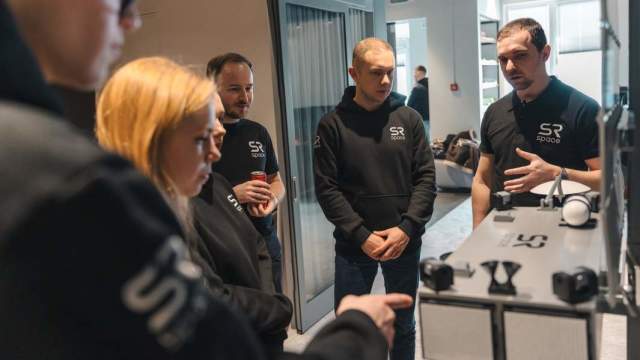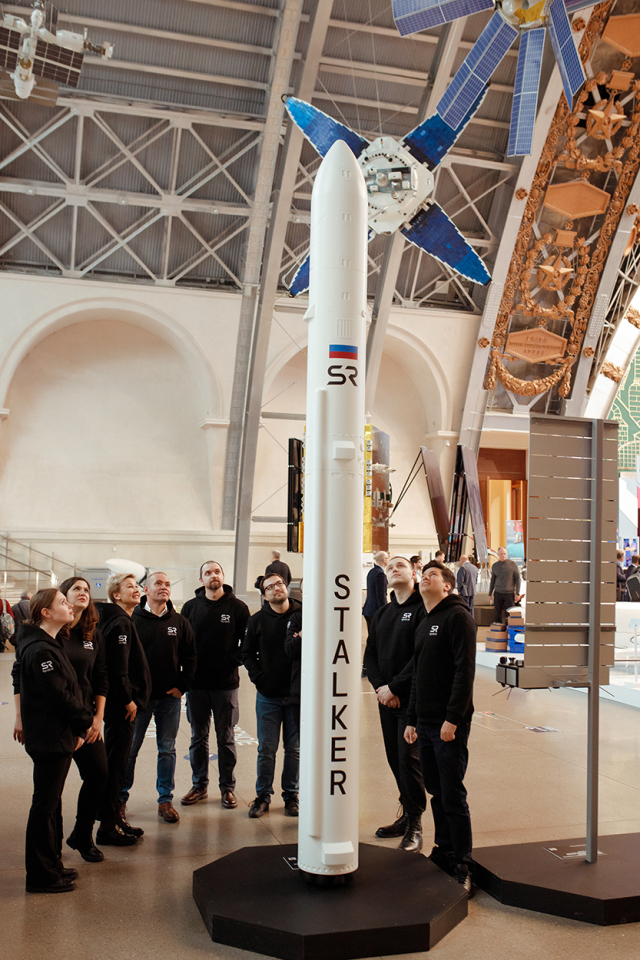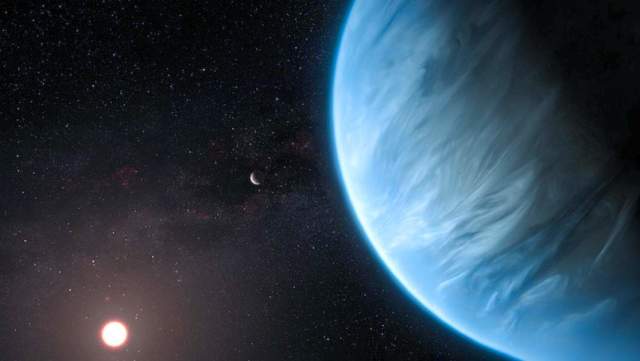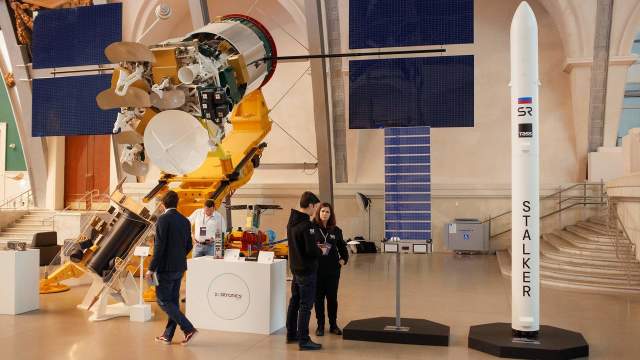How much will it cost to send cargo to low Earth orbits
A team of designers from the Russian Federation is preparing to test a new rocket engine printed on a 3D printer. It is designed to launch geophysical rockets into the upper atmosphere and near space. Tests are scheduled for the end of August — beginning of September. The launch of a rocket with a new engine is planned to be carried out in the fall of 2024. In the future, it will become the basis for the development of a larger thrust power plant that will be able to launch groups of small spacecraft into near-Earth orbits. Industry experts confirm the timeliness of the development, but note a number of problems that space startups face.
Innovative solutions
In late summer and early autumn, Russia intends to start firing tests of a new rocket engine developed by the startup company SR Space. The uniqueness of the power plant lies in the combination of innovative approaches that were used in its development and manufacture.
In particular, the combustion chamber and a number of other important parts of the unit were printed on a 3D printer. Its other innovative feature is the use of methane and oxygen as a fuel pair. Also, an innovative solution for Russia was the supply of fuel components to the combustion chamber using electric pumps.

Photo: SR Space Press Service
Image source: iz.ru
— This is a closed-cycle liquid rocket engine. The selected fuel pair is promising from the point of view of future projects. It is optimal for creating reusable rocket and space systems," Alexander Zykov, the company's executive director, told Izvestia.
He stressed that the design of the product incorporated the advanced achievements of domestic and world rocket engine building. This is a pilot project. In the future, it will become the basis for the creation of propulsion systems with greater thrust.
At the first stage, the new power plant will be designed to launch a geophysical rocket — also developed by SR Space engineers.Such rockets are designed to explore the upper atmosphere and near space. They provide an invaluable service to scientists, since they make it possible, at relatively low costs, to conduct experiments in weightlessness, vacuum and other conditions characteristic of outer space. In Soviet times, such devices were widely used in our country for testing new technologies, conducting biomedical experiments and meteorological observations in space.
Near space
The new launch vehicle together with the engine will weigh about 500 kg. It will be able to take up to 25 kg of payload to altitudes from 100 to 150 km.

Image source: Photo: SR Space Press Service
— Analyzing market trends, we noticed that there is a demand for geophysical launches. However, currently there are no available means of delivery in Russia. With our development, we are actually creating a new market segment. With a favorable development of events, the annual number of geophysical launches can number in the hundreds," explained Alexander Zykov.
He added that when entering the serial use of geophysical rockets, the cost of launches will be about 25 million rubles.
The designers hope to complete a full test cycle of the new engine and launch vehicle in one year and make the first flight in the fall of 2024.
— The rocket will fly just above the Pocket line (an altitude of 100 km above sea level, which is considered the boundary between the atmosphere and space. — "Izvestia"). It will be launched at an angle of 85℃. The entire flight will last about 10 minutes," explained the chief designer of the company, Pyotr Kudryashov.
They bake like pies
The next stage in the development of engineering thought of the company's specialists is the creation of an ultralight launch vehicle. Depending on the altitude, it will carry loads weighing from 300 to 400 kg to different near-Earth orbits.

Photo: SR Space Press Service
Image source: iz.ru
According to the developers, there are more and more companies in Russia that are developing spacecraft for various purposes. These are communications, telecommunications, satellite Internet, and means of remote sensing of the Earth. In the coming years, the country's needs are estimated by thousands of new spacecraft.
— In the West and in China, satellites are already being made like pies and actively used. We see that a market is also being formed in Russia. It's huge. We also count on the markets of friendly countries in Asia, Africa, Latin America," Alexander Zykov said
He noted that the development of satellite groupings will require their prompt withdrawal and updating. Ultralight launch vehicles can provide them with such an opportunity. Experts intend to carry out the first launch of such a device in 2025.
Cosmic constellations
The payload, which is ready to be sent into space in Russia in the coming years, will allow the company to launch with a frequency of once a week, Alexander Zykov believes. At the same time, the cost of launches may amount to about 250 million rubles.

Image source: Photo: SR Space Press Service
— Today, within the framework of the roadmap "Promising Space Systems and Services", under the leadership of First Deputy Prime Minister Andrei Belousov, projects of a number of Russian companies that design groupings of small spacecraft are being implemented, - General Director of JSC "AK "Novy Kosmos", adviser to the Governor of the Rostov region and a member of the roadmap committee "Promising space systems and services" Anton Alekseev.
In his opinion, it is beneficial for business to be able to quickly launch satellites into near-Earth orbits. Therefore, launch services and the appearance of ultralight and light class launch vehicles will be in demand. They will be able to quickly launch the required number of satellites into space on request.
— There is a successful experience of international rocket builders in using 3D printing for the manufacture of engines. There are positive examples in the domestic aviation industry. If the engines pass the established test cycle, then for the final result — the output of the payload to heights — there is no fundamental difference in the way they are created," Anton Alekseev added.
Additive technologies will be able to accelerate the manufacture of rocket technology and, thereby, increase the pace of space exploration, the expert believes.

Photo: Global Look Press/ESA/Hubble
Image source: iz.ru
–– Testing a full-fledged rocket engine is a difficult and dangerous job. It is hard to believe that a team that does not have its own bench base for experimental research and a full set of competencies in this area will be able to pass this procedure in a short time," Alexander Ilyin, CEO of Lin Industrial, expressed his doubts.
He noted that he is based on his own experience. In 2016-2018, his company developed the Taimyr family of modular launch vehicles and became one of the first Russian space startups.
— New means for conducting experiments in space will give an incentive to the development of domestic science. Today they are clearly not enough. To compensate for the shortage, scientists are inventing ways to simulate space conditions on Earth. The problem is that they don't give a comprehensive picture. Therefore, experts are extremely interested in creating more opportunities for research in space. The program of experiments can be painted for years to come, — said Irina Ogneva, head of the Laboratory of Cell Biophysics at the Institute of Biomedical Problems of the Russian Academy of Sciences.
The specialist stressed that for scientific experiments it is important not only to take the payload into space, but also to carefully deliver it to Earth. This requires the development of technologies for the return and soft landing of spacecraft.
Andrey Korshunov

